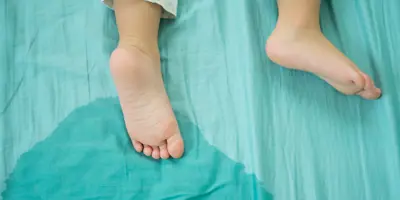
Family baking on a Sunday morning is sure to be a core memory for the kids. Someone has tipped half the flour onto the counter, butter is skating across the surface like it is on ice, and a suspicious trail of jammy fingerprints is making its way up the fridge door. This is the joy (and the chaos) of cooking together, and it can also be where kitchen safety comes into play.
Because one of the biggest questions is not about baking at all, but what to clean the kitchen with. Do you grab the same fabric cloth that has been hanging around for days? Or is this the moment when the use of kitchen roll is the safer and more hygienic choice?
The truth is, knowing the best cloth for cleaning kitchen surfaces depends on the mess in front of you. Microfibre might do the trick for light spills, but when it comes to raw ingredients or sticky chaos, paper towels keep things clean and safe. But most importantly, no matter what you choose, the mess is worth it, because every splatter is proof of the time spent together.
Kitchen towel hygiene and why it matters
One of the most overlooked aspects of kitchen safety is kitchen towel hygiene. A fabric cloth reused too many times between washes can smell sour, feel damp, and spread germs with every wipe. We’ve all discovered a forgotten cloth at the back of the sink and wrinkled our noses; a sure sign it’s harbouring bacteria.
Kitchen roll makes hygiene simple. Wipe up the mess, whether it is an egg cracked a little too enthusiastically by your child, sprinkles scattered in colourful piles across the counter, or icing mysteriously smeared across the cupboard handles, and then throw it away. No lingering smell, no hidden germs, and best of all, no meltdowns over the mess. Just the joy of baking together and embracing the kitchen chaos with your family.
Now, if you are wondering about the best cloth for cleaning kitchen surfaces in different scenarios, keep reading. From day-to-day spills to bigger cooking disasters, we will help you decide when to reach for a reusable cloth and when the use of kitchen roll is the smarter choice.
1. The best cloth for cleaning day-to-day mess
So, what’s the best cloth for cleaning when you’re simply wiping away dry crumbs from the toaster or dusting flour clouds after a baking session? In these cases, a reusable fabric cloth works well. It’s absorbent enough for light jobs and can be washed and reused.
Tip
But let’s be real: day-to-day mess is rarely just “light”. Think about the melted butter dripping down the side of your pancake pan, or the chocolate smudges kids leave behind after decorating cupcakes. That’s when Plenty kitchen rolls really earn their place – strong even when wet, they soak up greasy, sticky spills without tearing.
2. The best cloth for cleaning kitchen surfaces
When it comes to the best cloth for cleaning kitchen counters, the choice depends on the mess. A clean, damp microfiber cloth is fine for water rings from glasses or dust. But if you’ve just spilt raw egg down the counter, or pasta sauce has splattered from a pan while cooking dinner with your partner, a compostable paper towel is the safer choice.
Reusable cloths don’t always get washed straight away, and unless they’re cleaned at high heat after every use, bacteria can linger. Kitchen towels keep your kitchen safer – wipe, throw, done. No sour-smelling cloth hanging around.
3. The use of kitchen roll for greasy spills
Grease is one of the toughest kitchen messes to deal with. It smears across counters and clings to cloth fibres, even after washing. That’s why the use of kitchen roll is the smarter option here.
Paper towels absorb oil directly and can be binned after. Whether it’s frying eggs on a Saturday morning or roasting vegetables with olive oil, the grease wipes away cleanly. No wringing out greasy cloths, no clogging up your washing machine.
For extra help on greasy jobs, check out our guide to how to clean up after cooking with oil.
4. Are paper towels better than cloth towels for raw meat?
Picture this: you’re in charge of the Sunday roast (an honour really) and you’ve just trimmed raw chicken and need to wipe your board before prepping salad. Reaching for kitchen towel here isn’t just convenient – it’s essential for food safety.
When handling raw chicken, beef, or fish, the question of are paper towels better than cloth towels is easy to answer: yes. A cloth can transfer bacteria from one surface to another, even after rinsing. Using disposable kitchen towels ensures bacteria are wiped up and thrown out instantly.
To learn more about how to use kitchen towels when drying meat, check out our article, how to prepare steak before cooking it.
5. What to clean your kitchen with
So, what to clean kitchen with when you’re juggling dinner prep? The truth is most people use both. Fabric cloths for the light, everyday jobs – a quick crumb sweep or a glass of spilt water. Paper towels for the messy reality – the after-school milkshake that toppled over the counter, the soup you made for the kids when they’re unwell that boiled over, or the sticky barbecue sauce that somehow made its way onto the cupboard door handle.
Yes, it means your bin fills up a little quicker. But it also means you’re cooking for the ones you love and eating in a safer, fresher space.
6. The proper way of cleaning kitchen utensils
Don’t forget your tools. The proper way of cleaning kitchen utensils starts with hot, soapy water or a dishwasher. But before they even get to the sink, a wipe with kitchen roll can make life easier. Scraping away sauce from a ladle or soaking grease from a frying pan saves your water from turning cloudy straight away.
It also stops that moment when you plunge your hands into greasy dishwater and wonder if you’ve just touched a fork… or yesterday’s pasta sauce.
For more help on tools, check out our guide on how to clean your chopping board.
When it comes to kitchen safety, it is not really a battle of cloth versus paper. It is about using each at the right time. Fabric cloths are useful for quick, low-risk jobs, while disposable kitchen towels are the safer, smarter choice for hygiene-heavy moments like raw meat, greasy pans, sticky sauces, or boiling-over pasta water.
And yes, cleaning in the middle of cooking can feel chaotic. Flour dusts the counter after kneading dough, butter fingerprints appear across the fridge door, and suds from pasta water spread across the hob. But these are the little messes that come with making food for the people we love. With the right balance of tools, you can clean as you go, laugh off the chaos, and enjoy every meal that follows.
Related articles
How to deep clean your bedroom: bedroom cleaning tips
Ready to refresh your space? Learn how to deep clean your bedroom with simple steps and smart hacks, keeping your room fresh and tidy for longer!

Your guide to disinfecting and deep cleaning the house
Learn the difference between deep cleaning the house and disinfecting your home, and tips on how to do deep clean and disinfect your home.

Air fryer cleaning: how to clean an air fryer
Learn how to keep an air fryer clean, how to clean your air fryer as well as other top air fryer cleaning tips with this handy air fryer cleaning guide.

How to get pee out of a mattress and clean a wet bed in 10 steps
Has your child wet the bed? Don’t panic. Simply read our guide to learn how to remove urine from a mattress and clean a wet bed.

How to clean a TV screen: Plenty’s top tips for a sparkling clean TV
Discover the best way to clean TV screens with Plenty. Tired of a streaky, thumbprint-covered picture? Read how to clean a TV so it looks brand new!

How to Clean Baby Toys & Disinfect Toys Covered in Goo
Being a parent involves many skills, like knowing how to sanitise baby toys! Find out how to clean soft baby toys, hard bath toys and teething toys here.


